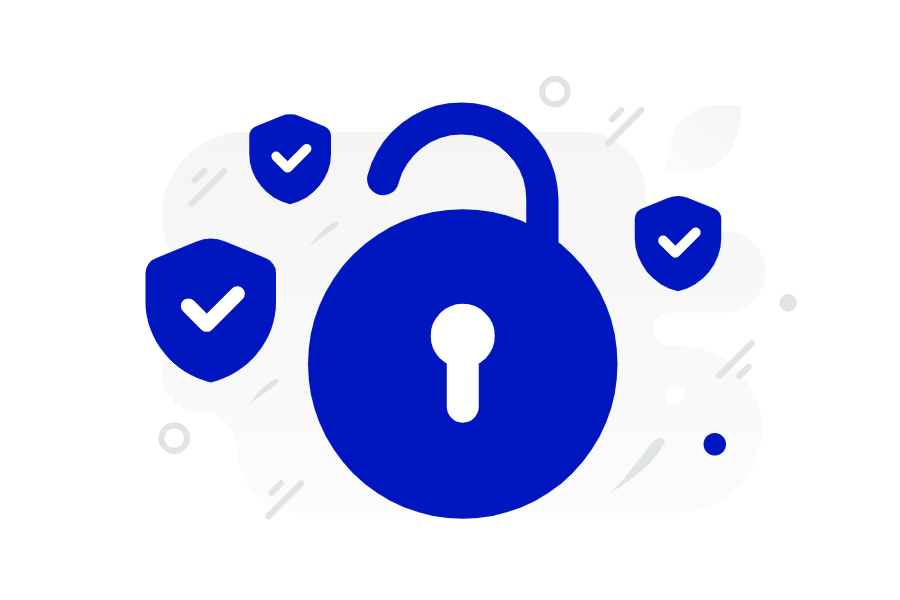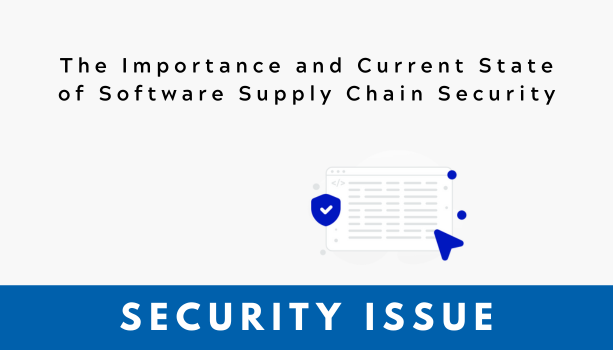[Security Issue] The Importance and Current State of Software Supply Chain Security
Software supply chain security has gained worldwide attention in recent years. This is a concept that encompasses the entire process by which software products are designed, developed, and distributed, along with all elements involved in that process. Following the SolarWinds hacking incident in late 2020, countries began to focus on software supply chain security.
SolarWinds is an IT solutions and software provider with many Fortune 1000 companies as customers, with many organizations using SolarWinds’ network monitoring solution, Orion. A malicious hacking group was able to distribute malware to more than 18,000 organizations through Orion’s update files, severely damaging U.S. government agencies and global companies, and bringing the importance of software supply chain security to light. In July 2021, while the aftermath of the SolarWinds incident had not yet subsided, another IT management software company, Kaseya, was also targeted in a supply chain attack. In the following year, large-scale software supply chain attacks such as the Log4j vulnerability further highlighted the importance of software supply chain security.

What Is the Software Supply Chain?
As mentioned earlier, the software supply chain refers to the entire lifecycle in which software is planned, designed, developed, tested, distributed, and maintained, along with all of its components. This includes source code, open-source libraries, third-party components, development tools, build systems, distribution platforms, and the human resources that operate them. Software supply chain security, therefore, refers to activities aimed at ensuring security and integrity throughout this process.
The software supply chain can be broadly divided into ‘upstream’ and ‘downstream’ components. Upstream refers to external components and tools used by developers, while downstream refers to customers and users who use the developed software. Supply chain attacks primarily target upstream dependencies, potentially causing cascading damage downstream to customers and users of the developed software.
The Importance of Software Supply Chain Security
✅ Potential for Cascading Damage Attacks on the software supply chain have a ‘one-to-many’ effect, as they can target a single point in the supply chain and affect numerous end users. For example, inserting malicious code into an open-source library used by many applications puts all those applications and their users at risk. As demonstrated in the SolarWinds case, a single supply chain attack can impact thousands of businesses.
✅ Accelerated Digital Transformation Increases Risk The acceleration of digital transformation following COVID-19 has led to a significant increase in software dependency. Nearly all industries operate based on software, and the proliferation of cloud services and Software as a Service (SaaS) models has made it more complex. This increasing complexity makes it increasingly difficult to detect and resolve security vulnerabilities.
✅ Connection to National Security Software supply chain security is directly tied to national security concerns. Attacks on software used in critical sectors such as critical infrastructure, defense, finance, and healthcare can lead to national crises. Governments have begun introducing laws and regulations to strengthen these defenses as state-sponsored hacking groups have targeted software supply chains as an efficient attack vector.
✅ Business Continuity and Reputation For businesses, software supply chain security is directly linked to business continuity. Service interruptions caused by supply chain attacks can lead to declining customer confidence and reputation, as well as direct financial losses. For B2B companies in particular, legal liability and contract violations can arise if their products become the source of a security breach at other companies.
Domestic and International Software Supply Chain Security Landscape
The U.S. government announced comprehensive measures to strengthen software supply chain security through President Biden’s Executive Order 14028 in May 2021. The order strengthened security requirements for software used by the federal government and required developers to provide Software Bills of Materials (SBOM). In 2023, the U.S. Cybersecurity and Infrastructure Security Agency (CISA) announced its “Secure by Design” initiative, emphasizing how it should be considered from the early stages of software development. Additionally, the Google-led Supply Chain Levels for Software Artifacts (SLSA) framework has gained attention, defining four incremental security levels to ensure the integrity of the software supply chain.
The European Union has also proposed the Cyber Resilience Act of 2022 to strengthen the security requirements for all digital products sold in the EU market. The legislation assigns software developers responsibility for maintaining security throughout their products’ life cycles, and requires prompt responses in the event of security vulnerabilities.
The importance of software supply chain security is also growing in Korea. The Korea Internet & Security Agency (KISA) revised its software development security guidelines in 2023 to include related elements and help companies comply with them. The government established “Software Supply Chain Security Guidelines 1.0” in 2023 to support public institutions and companies in developing their own security management capabilities in response to rapidly evolving cybersecurity risks in software supply chains and the mandatory SBOM submission requirements implemented by major international partners such as the U.S. and Europe.

Software supply chain security is no longer optional, but essential. As the digital economy develops, software has infiltrated every aspect of our society, meaning that protecting the software supply chain is critical for individuals, businesses, and nations alike. The widespread use of open-source software, complex dependencies, and rapid development cycles are making the software supply chain increasingly vulnerable. Software supply chain security cannot be achieved through the efforts of a single organization alone**; it** requires participation from developers, businesses, governments, and end users in maintaining security. Through these collaborative efforts, we can ensure the trust and safety of the digital world.
* Would you like to learn more?
We invite you to discover how we can help your business.
